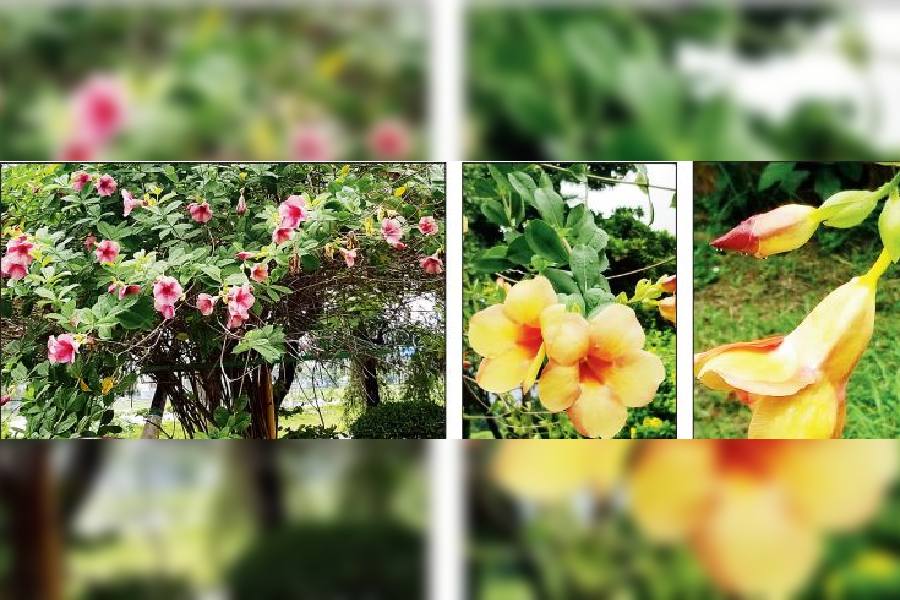It’s native to the South Americas but has become one of most common trees spotted in the gardens of Salt Lake today. Its mostly yellow flowers look beautiful and enhance the beauty of its surroundings. Today we shall find out how to best grow this plant. The Allamanda is an evergreen, perennial flowering shrub — native to the South Americas but — distributed from Mexico to Argentina. They produce stunning coloured flowers throughout the year. They are ornamental plants cultivated for their large, colourful flowers. The botanical name is Allamanda cathartica. It is a strong vine plant or woody climber with large yellow flowers. They grow fast and offer spectacular blooming in summer. They illuminate the garden with its bright yellow flowers. Allamanda blanchetii bears pink flowers. They are also called Allamanda Trumpet, Golden Trumpet, Yellow Bell and Buttercup flowers. These plants can grow 10 to 20ft tall and three to six ft wide. When placed in full sun, they spread a delicate fruity fragrance.
All the parts of this plant induce skin photosensitivity. There are more than a dozen species of Allamanda, but the most common one in cultivation is the Allamanda cathartica. This is a common landscape plant in subtropical and tropical regions. There are a few popular varieties within this species — Grandiflora (large yellow flowers), Hendersonii (redbuds and goldencoloured flowers), Flore Pleno (double white flowers) and Williamsii (double yellow flowers). Here’s how to look after the Allamanda—
Soil
Allamonda prefers acidic soil. A rich, peat-based potting soil with excellent drainage is beneficial. Allamandas need soil that drains particularly well. Use mix of one part garden soil, one part soil mix and one part sand.
Light
Allamanda prefers strong direct sun light. They are adapted to full sun. Provide at least five to six hours of the morning sun. Adequate sunlight is essential for blooming.
Water
The Allamanda vine has particularly high water needs during the first year after planting. Water liberally throughout the hotter months, making sure your growing pot has good drainage. It's also helpful to mist every other day or so to provide adequate humidity. In the colder months, reduce watering, but don't let the plant dry out. Allamanda is sensitive to calcium-loaded water.
Fertiliser
Feed with a fertiliser low in nitrogen twice a month, especially for Allamanda grown in pots. Cut fertiliser back to once a month in the colder months.
Pests and diseases
Allamanda plants are resistant to most parasites and diseases. Sometimes leaves turn brown and curl up due to aphid infestation. It is also vulnerable to red spider mite attacks. Systematic use of pesticides and insecticides will check the attack on the plant.
Propagation
Allamanda roots readily from stem cuttings. Use a rooting hormone for the best chances of success and pot the cutting into a tray of sand. Place the cutting in a warm, humid place and wait for new growth to emerge before potting them into a larger pot with garden soil.
Pruning
Allamanda takes pruning well, it even helps it grow stronger. Pruning doesn’t impact the blooming, nor does it slow the plant’s growth. Severe pruning can be performed several times a year, or once every couple of years.The plants make human skin more vulnerable to irritation when exposed to ultra-violet rays of the sun. Handle it with gloves to avoid this toxicity. Ingesting the plant causes nausea and vomiting. Allamondas love moisture. In hotter months, try to increase air moisture in the vicinity of the plant. A nearby fountain or birdbath could do the trick outdoors.
